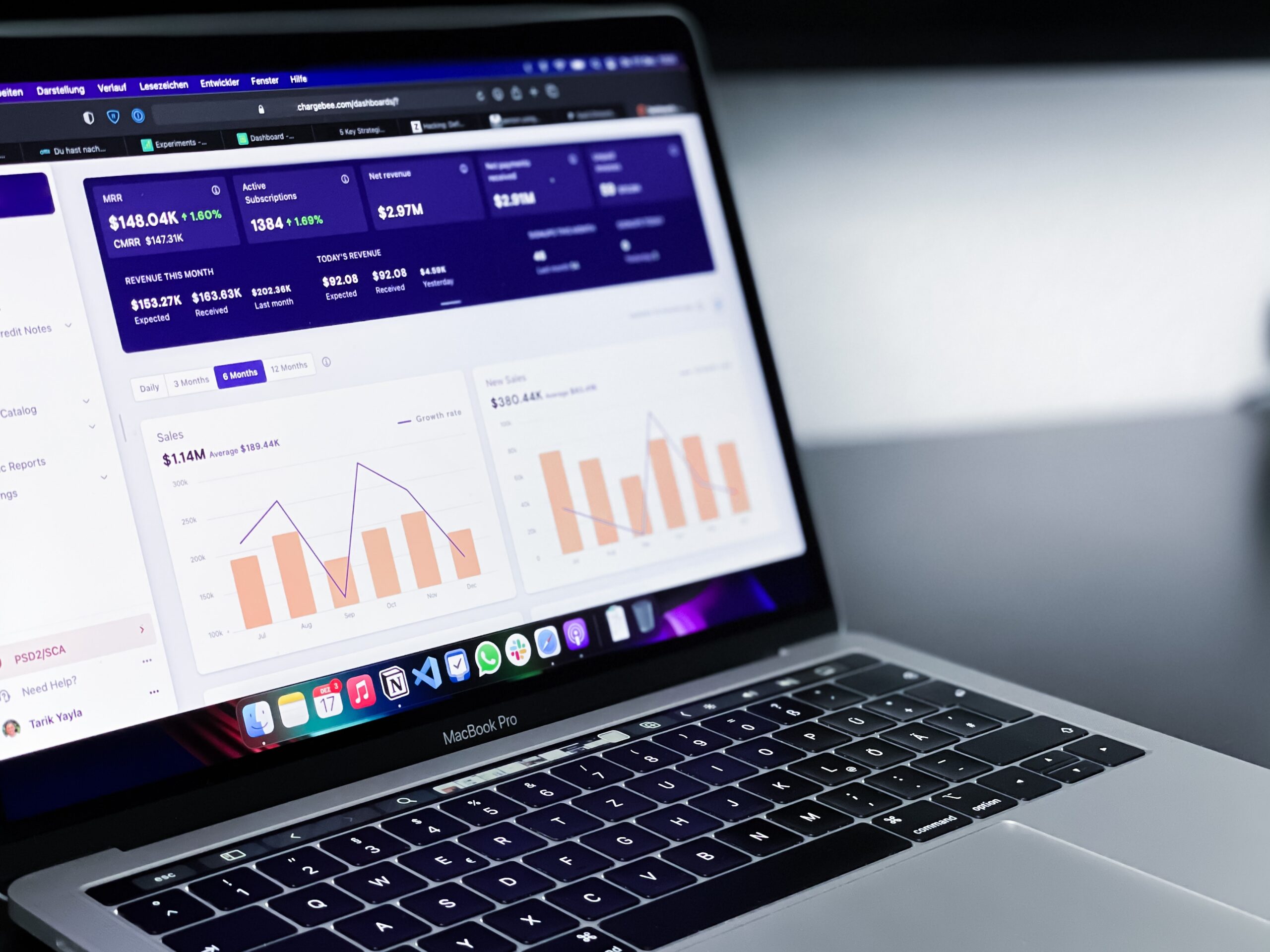Dynamic Forecasting Gives Manufacturing the Means to Survive
Last updated on Friday, April 28, 2023

In the last two years alone, we’ve seen the pace of change exponentially increase in manufacturing. Uncertainties on the customer demand side as well as the supply chain and demand planning side have created a complex and expensive “pinch point” for manufacturers.
In their newest manufacturing industry outlook report, Deloitte encourages manufacturing executives to pay close attention to how they’re going to mitigate the risks of ongoing disruptions. The experts point to increased use of digital technology and time-tested approaches (like building local capacity and moving away from just-in-time sourcing) to create redundancy.
The problem is that there is a massive gap between gaining critical insight from that digital technology and applying those time-tested approaches.
Every department has data critical to the health of your manufacturing company — from sales to operations to finance. The gap isn’t from lack of data, it’s from data not flowing easily between teams. This creates three risks to a manufacturing organization:
- Planning teams and decision-makers aren’t getting real-time updates on changes happening at the customer level. Getting once-a-month updates on what’s happening with new and existing customers isn’t enough lead time to solve problems and close gaps.
- Critical time is lost aggregating the data. When data has to be requested and gathered from disconnected teams, and then collated into a single source for forecasting purposes, valuable time is lost. This means forecasts are always based on stale data, making them much less accurate.
- In the process of data aggregation, significant levels of detail are lost. When forecasting on a roll-up basis, by necessity you’re summarizing the individual data sources. Once this is done, there’s no easy way to drill back down to find out the source of a forecasted gap.
Without real-time insight from data across the organization, how can you possibly know what time-tested approach to take until it’s too late?
Experts from McKinsey hint at the solution: “ … incorporating real-world operations insights into the financial-forecasting process can help CFOs and finance teams predict bottom-line issues early, based on a careful assessment of quality, operations, and customer-retention measurements.”
But the last thing manufacturers need in this turbulent market is more theory.
It’s time to get down to brass tacks.
How can manufacturers get data flowing dynamically across the organization to eliminate uncertainty, improve accuracy, and provide greater visibility for decision making?
Dynamic forecasting is the answer to that question. And in this article, you’re going to learn exactly how to achieve it for your manufacturing organization.
What Is Dynamic Forecasting, and Why Should Manufacturers Care?
Dynamic forecasting uses real-time data from all sources (sales, operations, finance, etc.) to give you greater accuracy in your forecast and greater agility to identify and act on changes in demand.
This applies whether you are an OEM manufacturer ramping up a new customer, a component manufacturer with longstanding business-on-account customer relationships, or a project-based manufacturer with large orders that roll out over a period of time.
Without dynamic forecasting, manufacturing organizations must rely on traditional forecasting methods, wasting precious time and not gleaning the insight they need from their vast stores of data.
Kevin O’Connor, CFO of Acuant put the challenge this way in a recent conversation:
“We had a number of very complex spreadsheets that we had built over time, that allowed us to take billings data, and then use historical estimates to try and translate it into revenue. And that works. But it was extremely complex, and it required a very strong working knowledge of those spreadsheets. It wasn’t easy to understand, and it wasn’t easy to pass on to others. It was a bit of a black box.”
In manufacturing, accuracy in the forecast is just as important as speed. In McKinsey’s study, only 8% of CFOs reported being completely satisfied with their forecasting process — and 40% said that their forecasts are not accurate and that the process takes way too much time. Yet accurate demand and revenue forecasts make the difference between profitability and wasted resources.
Nathalie Rutledge at nVent Lenton defines the challenge for her manufacturing organization this way:
“[The problem is] understanding the product requirements at the job site for those projects, and communicating that to our facilities so we can plan the manufacturing in order to supply those large projects. … That’s where we asked ourselves, how do we better acquire the information from our customers, and transfer that information to our material planners at our manufacturing facilities?”
Dynamic forecasting with revVana solves the problems of forecast speed and accuracy by connecting real-time customer activity insight to cross-departmental planning processes.
What “Dynamic” Really Means for Manufacturing Companies
In manufacturing, being a “dynamic” organization means something very different than in other industries. For one, it means being better able to adapt to constant change.
- Adapting to material changes reported by on-the-ground teams
- Adjusting the basis of your revenue forecasting on the fly
- Identifying gaps between the plan and reality, and having the insight to respond rapidly
- Continuous improvement in forecast accuracy
Traditional forecasting methods don’t enable this kind of agility. Traditional forecasts are done with spreadsheets, which slow manufacturing organizations down and add risk. But most manufacturers are still relying on this method, and it’s what they’re most comfortable with — so let’s not throw the baby out with the bathwater.
Spreadsheets will always have their place. They’re great for certain things, like offline analysis, making charts and developing custom formulas.
But relying on spreadsheets for forecasting purposes is a big risk for manufacturers. And that risk is becoming greater as economic turbulence continues.
Spreadsheets are slow and cumbersome — and they also carry the very real danger of human error and security threats. When you ask your salespeople to update their data in a system they’re not “living” in every day, you’re increasing those dangers while also taking your salespeople away from their primary task of making sales. And passing spreadsheets back and forth poses data security issues. All it takes is someone mistyping an email address for unintended recipients to get access to confidential information. Finally, spreadsheets are not built for real-time collaboration. There’s no way to ensure that everyone dialing into a team meeting is looking at the same report, or the same view of the data.
Customer relationships, market conditions, and supply relationships are dynamic — and your forecasting should be, too.

How to Achieve Dynamic Forecasting With Your Salesforce Data
When you can get real-time insight on customer behavior from the people closest to them (sales reps, customer success teams, etc.) and can automatically generate an updated revenue forecast when things change, you create a virtuous cycle of improvement. Your demand planning horizon grows, your revenue forecasts become more reliable, and everyone across the organization can collaborate more effectively to deliver for the customer.
This is no longer theoretical. You can achieve dynamic revenue forecasting right now, with the data your team is already updating in Salesforce. Simply add the revVana app from the Salesforce AppExchange.
Implementing revVana in your existing Salesforce platform for dynamic forecasting gives you three unique advantages:
1. Financial
The financial advantages include greater forecast accuracy, more efficient use of resources, and more time for your salespeople to spend selling.
“We eliminated 30% of the time needed for the average salesperson to input their project forecasts, right away. And we believe that reducing the amount of time that they have to spend to input that data or edit it, it’s more time that they can be selling, it’s more time that they can bring revenue to the organization.” –Nathalie Rutledge, nVent LENTON
2. Operational
Operational advantages include real-time visibility to changes in data, better cross-departmental alignment, and greater collaboration — all of which add up to improved agility for a manufacturing organization.
“From the sales perspective, we can run a billing report, we can run a revenue forecast, we can have transparency by opportunity or by item code, to show where we’re seeing the growth. And if we have questions, we know exactly who to go to. So it just gives us better transparency and really democratizes the forecasting process.” –Kevin O’Connor, Acuant
“For demand planning, the hardest part of what we do is understanding what changed. revVana takes a snapshot and we can understand what increased and what decreased, what shifted, very easily. So the executives can go to the dashboards and see it right then and there.” –Nathalie Rutledge, nVent LENTON
3. Strategic
With real-time visibility to change and improved agility comes a massive competitive advantage. Executive teams have greater insight for decision making and can better align investments to opportunity.
“You can pass that information to Tableau or Einstein or anything, and create live dashboards. It eliminates a lot of back-and-forth questions, and people can self-serve. Or if executives are asking me questions, I can trust that the quality of the data and those dashboards is there, and I can talk to the data.” –Nathalie Rutledge, nVent LENTON

Crawl, Walk, Run: Achieving Dynamic Forecasting in 3 Steps
Most manufacturing leaders are surprised to discover that they can achieve these advantages in a matter of weeks. And with a “crawl, walk, run” approach to implementing dynamic forecasting with revVana, you can achieve even more as time goes on.
The most important step, however, is the first one. You’ll see the greatest benefits here, and astonishingly fast. For some organizations, this is enough. For others, the next two steps yield greater outcomes than they could ever hope to achieve with spreadsheets.
Step 1: Extend Salesforce with revVana
The first step to dynamic forecasting is breaking down the data silos between teams. Add revVana to your Salesforce platform to create a bridge to the real-time data and processes between sales, finance and operations.
Once the bridge is created with revVana, and data is flowing freely across the organization, you can automate forecasts. As data is updated, forecasts are automatically updated at the speed of change — and your executive team has real-time insight for decision making.
If this is all you do with dynamic revenue forecasting, you’ll be lightyears ahead of manufacturers using traditional spreadsheet methods.
Step 2: Let the data instruct what you need to do next
Once data is flowing easily across your organization with revVana, you’ll start identifying gaps and opportunities in your forecasts. You’ll see quickly what data needs to be updated more often or at greater detail, and what process to improve next.
Step 3: Establish the feedback loop
Over time, you can introduce operational metrics beyond revenue and demand planning. With every forecast, you identify gaps, and every time you close a gap, your forecasts get more accurate. You see continuous improvement with this constant feedback loop.
Beyond Theory: How revVana Accelerates Dynamic Revenue Forecasting
You’ve seen for yourself how the economic landscape has changed, and how market and customer dynamics are in an accelerating state of upheaval. The experts agree that the volatility in demand and supply is going to continue for manufacturing. Organizations that create resilience in their processes — around forecasting customer demand and planning for delivering on that demand — are the ones that will survive what’s around the next corner.
While the experts are theorizing, however, manufacturing organizations need to know how to do it.
Implement revVana in your existing Salesforce platform, and you can leverage your existing data to achieve dynamic forecasting. From there, so much more is possible for your manufacturing company, no matter what the future brings.
Dynamic Forecasting Gives Manufacturing the Means to Survive
Published on Friday, April 28, 2023
